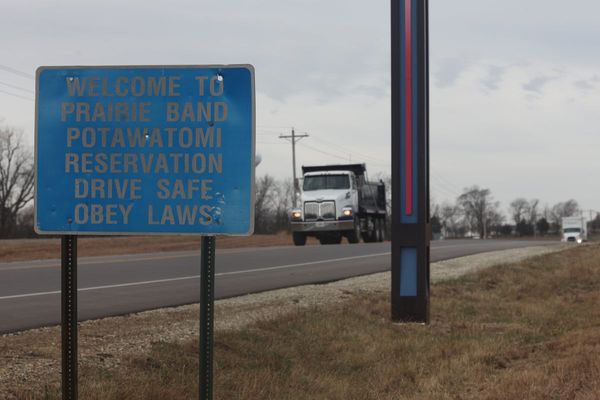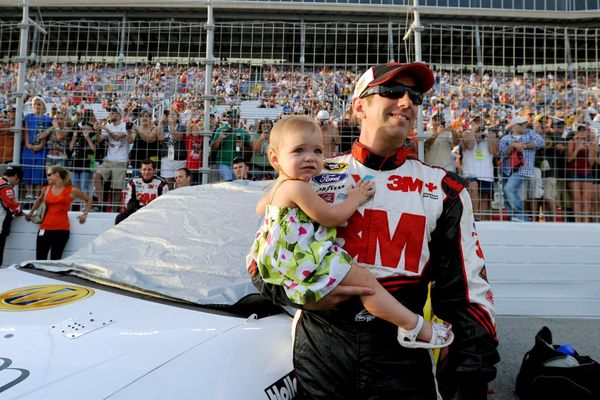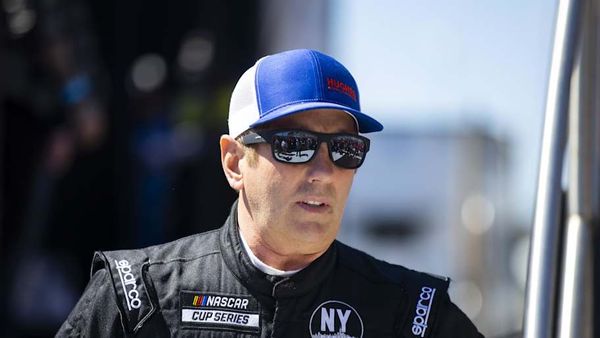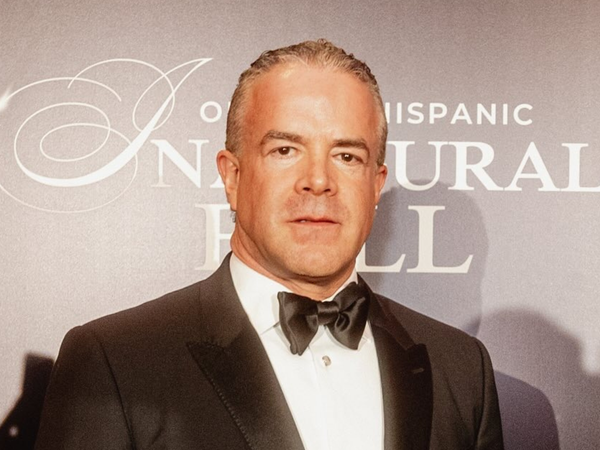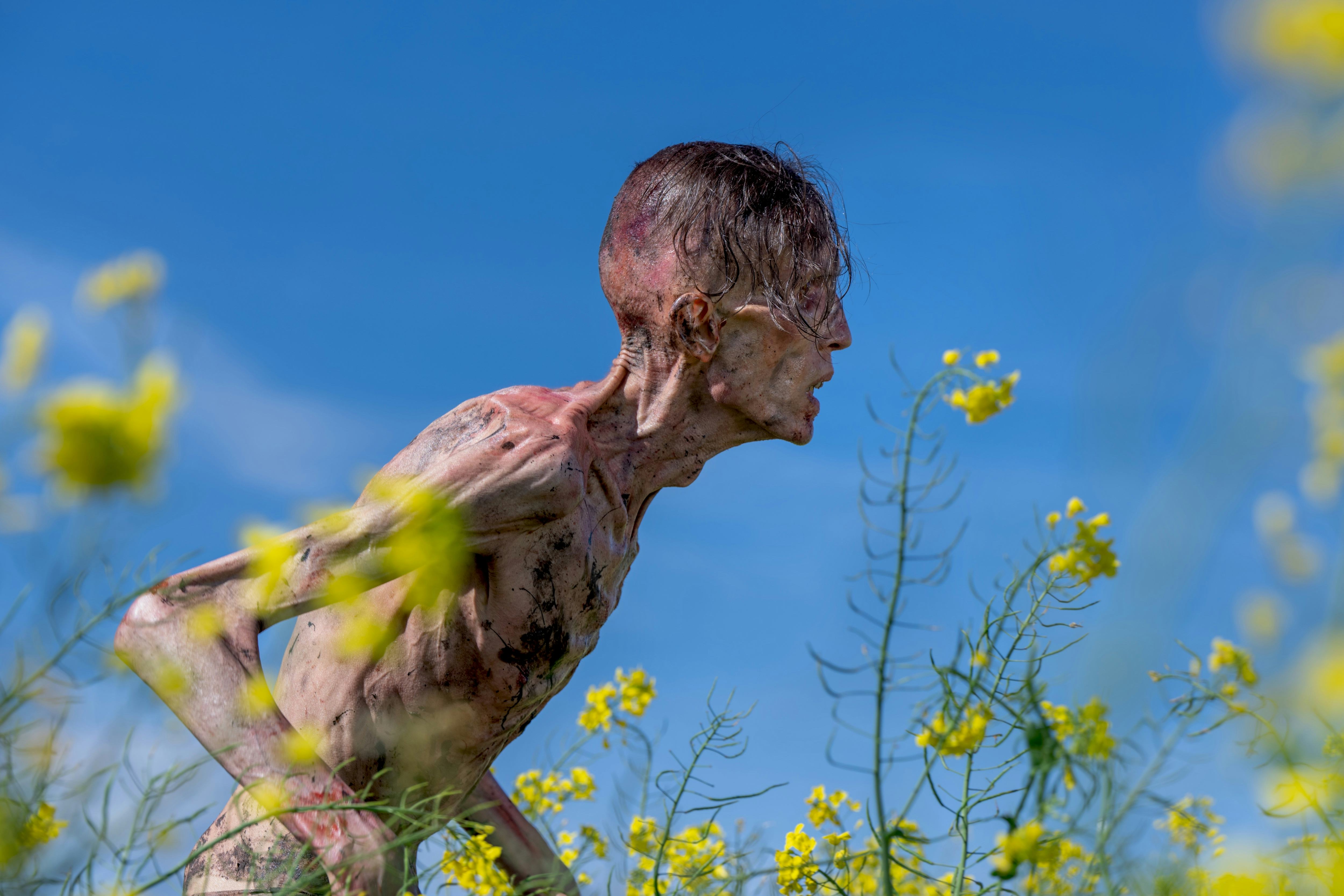
Ask 12 people the purpose of science fiction and you’ll get 13 different answers, but two likely agreed-upon definitions are ever-present in 28 Years Later. The first is to reflect contemporary anxieties — which a story of a deadly virus is sure to do just five years removed from the COVID-19 breakout. The second is to show us things we’ve never seen before, and it may surprise you to learn just how much Danny Boyle’s entertaining, poignant, seemingly grounded zombie sequel adheres to this tenet. It’s an amusingly strange (and appropriately strange-looking) horror blockbuster that may as well take place in an alien world, despite feeling uncannily familiar.
Packed to the gills with themes and ideas that shouldn’t mix, the third part in the series (and the first entry in a brand-new trilogy) is both visually and narrative propulsive, in ways that make it a delightful oddity. Boyle returns to the director’s chair alongside screenwriter Alex Garland, whose collaboration on the gritty, lo-fi 28 Days Later (2002) helped resurrect the zombie subgenre and popularized sprinting “rage zombies.” The beginnings of their original apocalypse can be glimpsed in the sequel’s prologue, which opens on a group of terrified children watching the world go bye-bye. Numerous flailing, blood-puking “Infected” tear through a sequestered living room in a scene that’s appropriately jolting and surprisingly fun to watch.
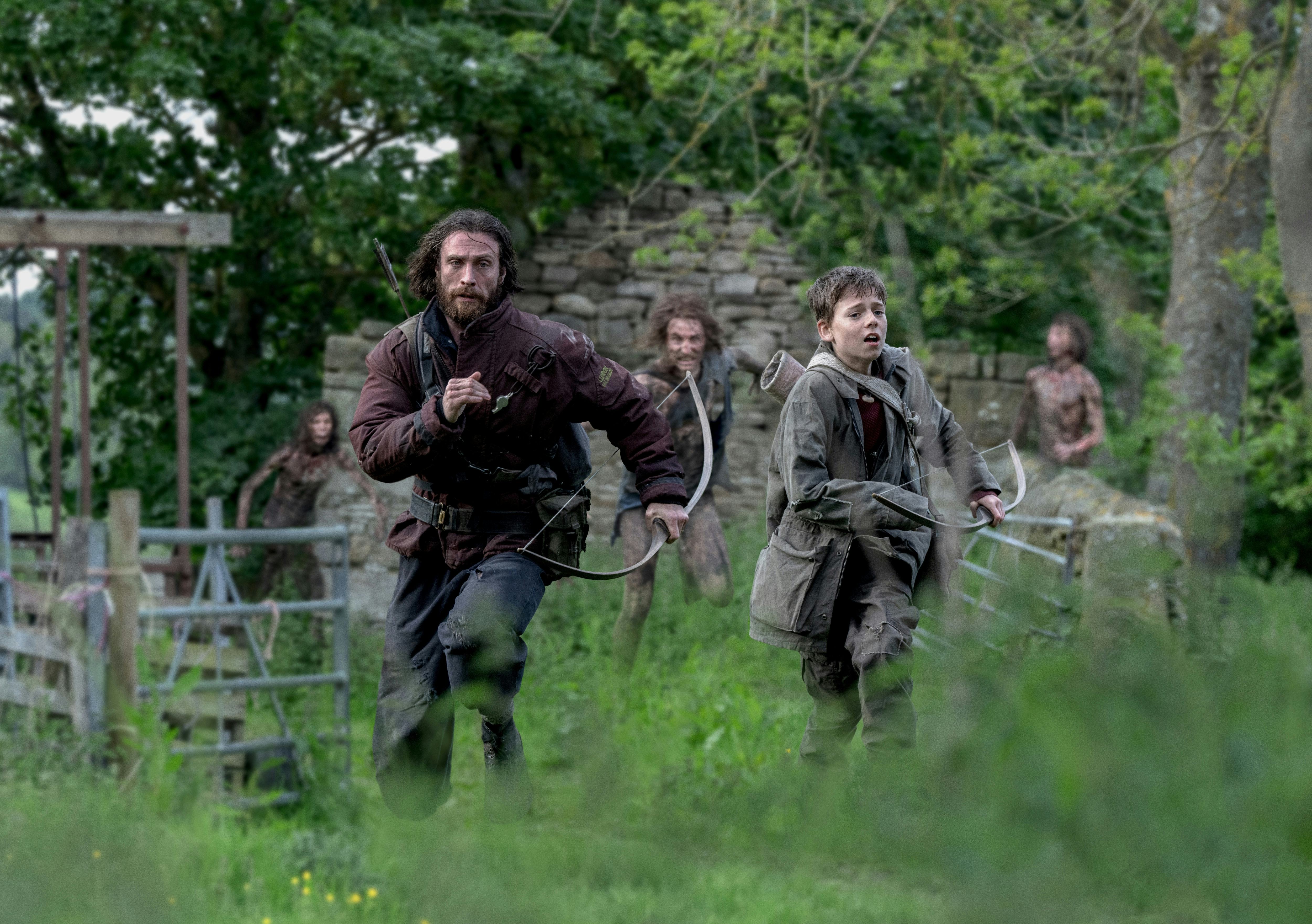
As the title suggests, the real story is set 28 years after this eruption, but its focus remains on the way adolescents process the world around them — especially those born into a postcollapse civilization. Twelve-year-old Spike (Alfie Williams) lives on an isolated islet with his gruff scavenger father Jamie (Aaron Taylor-Johnson), his ailing mother Isla (Jodie Comer), and their small close-knit community. It’s a big day for the soft-spoken youth, as the whole village celebrates his first trip to the British mainland — via a small, rocky bridge that emerges during low tide — for his first taste of slaying zombies with bows and arrows. The rules handed down to Spike and Jamie are firm but fair: Should they fail to return to the island’s heavily guarded wooden gates, no one will be sent to save them.
The old world, and the world outside Britain — where time has progressed normally, mostly ignoring the ending of 28 Weeks Later — may as well no longer exist, as 28 Years Later remains tethered to the norms of this new reality. It’s oddly beautiful at times. The lack of light pollution returns the night sky to a gorgeous, pre-civilization hypervisibility. But there’s an equal and opposite ugliness lurking around every forested bend. A sense of ritual pervades each scene: The father-son hunting excursion is a key step in the community’s coming of age, but it’s not the only ritual we see. In fact, it seems like the zombies on the mainland may have, in some ways, evolved, as evidenced by a freshly decapitated deer head placed intentionally on a tree branch, like some perverse form of art (or warning) staged by an intelligent being.

However, despite the ways the Infected have developed over the years, Boyle and Garland aren’t interested in deconstructing the zombie movie. Rather, they seem to revisit their efforts from 23 years prior with brand-new digital tools and a renewed thematic approach. Where 28 Days Later was shot on rough Mini-DV tape, their decades-later sequel employs numerous iPhone 15 Pro Max smartphones, either placed on drones or rigged up side by side. The various lenses and attachments give the movie a more traditionally cinematic look, at least on occasion, but the iPhone’s miniature size allows for Boyle and cinematographer Anthony Dod Mantle to get up close and personal with the drama. As Spike and Jamie traverse the dangerous highlands, their fears and uncertainties are captured with extreme intimacy.
However, the aforementioned rigs (which line up several dozen iPhones) create a disorienting sensation during bursts of intense action. Anytime arrows pierce an Infected’s skin, the frame slides between these various lenses, in what feels a modern descendent to “bullet time” in The Matrix, which employed similar techniques. The chaos seems too kinetic to even process — for the audience, but especially for Spike, who has no reprieve from the bloodshed. However, despite his paralyzing fears of the undead, Spike is forced into action when Isla’s headaches and memory loss start to get worse. Folk tales of a mad doctor who lives on the mainland send the young boy on a fetch quest to seek out this mythical figure, who may be his only hope of saving his mum.
It takes a while for the movie to find this focus, and the subsequent bittersweet theme of a young boy learning to accept death as a constant of life. However, this thematic inversion of the first film — in which human characters thrust into a sudden apocalypse eventually regain hope — isn’t as bleak as it might seem. There’s a perverse beauty to it, especially when Spike eventually comes upon strange and disturbing monuments to death itself, which soon take on surprisingly touching meaning in the story’s larger purview. But while the movie takes its time to reach these conclusions, the interim is raucously entertaining.

Jon Harris’ topsy-turvy editing ropes in both disturbing dream sequences, as well as footage of old movies set during world wars and medieval battles, framing the event of 28 Years Later as the natural next extension of human conflict. The zombies themselves are a delight to discover, as the decades-old rage virus has begun to cause divergent mutations. Some of the Infected are slowed down and engorged; they crawl and feel like otherworldly fauna emerging from the ground. Others have become supernaturally strong and swift, leading to some of the most jaw-dropping, ludicrous on-screen gore in any Hollywood studio film. It’s hard not to laugh at the sheer absurdity of what transpires. And yet, these moments of over-the-top violence dovetail gently into the movie’s more stirring scenes, yielding a daring emotional whiplash, as Spike learns to live and grow in an unforgiving world that has accepted widespread death and disease as normal.
Perhaps strangest of all is 28 Years Later’s eagerness to set up a sequel or two — via some incredibly bizarre climactic happenings — but these teases are thankfully relegated to a postscript, once the film has closed the book on its character-centric story. Despite its scattered nature, it’s a wildly fun experience with a deeply human core, fashioned through images no major studio film has ever thought to put on screen. You couldn’t ask for much more from big-budget horror sci-fi, and the fact that there are at least two more sequels planned is an exciting promise.
